原标题:Digitally networked media boosting public awareness of shared fates
Guests:

John Keane: Professor of Political Science at the University of Sydney, Australia and the Social Science Research Center in Berlin, Germany

Daya Thussu: Professor of International Communication at Hong Kong Baptist University and former Professor of International Communication at the University of Westminster, UK

Jiang Fei: Dean and Professor of the School of International Journalism and Communication, Beijing Foreign Studies University, Chairman of the Foreign Journalism and Communication Committee of the Chinese Society of Journalism
Host:

Xiao Lianbing: Secretary General of Guangming Daily International Exchange, Cooperation and Communication Center
Xiao: As experts in the field of international communication, how do you see the impacts of the COVID-19 on humanity?
Keane:The great pestilence that has gripped our planet since the early months of 2020 is proving once again that all crises are moments of opportunity and innovation. The large-scale death and suffering and social disruption triggered by the contagion are both terrible and troubling omens of possible future environmental catastrophes. But this pestilence is more than a tragedy: it is demonstrating that breakthroughs can be the child of breakdowns. During the past year, people have been reminded that seasons of disease are life-pounding moments when normality flounders, anxieties flourish and thoughts turn darkly inwards. Pandemics tear apart old habits. They break hearts. Certainties are tossed to the wind. People grow fearful. Whole societies grow fragile. Death looms. Yet for the first time on a global scale, this pestilence has shown that digital tools and digitally guided institutions can be used to reduce collective anxieties, combat disruption and death, and promote social solidarity. The effective deployment of ICTs marks off our period of pestilence from, say, the Russian and Spanish influenzas, which a century ago were reported and handled globally for the first time by using the slow-motion and clumsy tools of telegraph messages, steamboats, newspapers, word-of-mouth reports and printed instructions to isolate and don masks. Our pandemic is by contrast a thoroughly digital phenomenon. With the help of bullet-speed, night-and-day reporting, the virus has not only become a global media event that arouses public awareness, fears of sickness and death and social disruption on a scale and at a depth never before witnessed. Helped by new digital methods, the public scrutiny and management of a killer virus is also happening, with an intensity that has no historical precedent.
Thussu:Despite its extremely adverse impact on the global health and international economy, the Covid-19 pandemic has also offered new opportunities to rethink the role of communication and information technologies in our digitally networked globe. The rapid globalization of ICTs in the past decade has significantly helped the world to manage the worst global public health emergency in living memory – with more than 61 million confirmed cases and 1.4 million deaths by the end of November 2020, according to the data from the World Health Organization. ICTs have played a crucial role in the way the Chinese authorities have fought and controlled the virus - in striking contrast to the rather ham-handed approach adopted by the world’s most powerful country – the United States. China has advocated multilateralism, supporting the WHO in its efforts to provide the anti-Covid-19 virus as a public good. It has also suggested creating an internationally recognized digital mechanism for health codes, so that the world could get back to pre-Covid levels of travel, trade and tourism.
Jiang:The pandemic COVID-19 has brought about enormous challenges to the public life globally. People’s home quarantine has deterred the physical contact, but not communication. The emerging communication technologies could take on the role of connecting individuals and the world in a timely and effective manner. On the one hand, the requirements of the prevention and control of the pandemic have facilitated the worldwide applications of a variety of social media platforms, soft wares and digital technologies. On the other hand, the pandemic has profoundly changed the world’s communication ecology while changing the normality of social groups and communities. In China, the national big data system and the regional health code management have exerted effective disease prevention and control. As against information explosion and chaos, regular press conferences[routine and timely press briefings] contribute[have contributed] a lot to the stabilizing of the whole social stability. We have witnessed China’s resilience, great sense of responsibility and determined goal[determination] as a big nation given how this country combats with the pandemic. Although COVID-19 has not been eradicated yet worldwide, the ecological gaming of global communication system has already grown [been] increasingly complicated and fierce in the post-pandemic era. From a global perspective, while China has effectively controlled the spread of the disease and provided public goods such as medical supplies and vaccine materials[vaccines] to other countries, the pandemic is still rampant in the United States. Competing public opinions under the pandemic theme have emerged in the field of global communication.
Xiao: How to view the impacts of ICT on the post-epidemic era?
Keane:The socially enabling effects of ICTs aren’t confined to domestic settings. Equally important, though much less obvious, is the way the application of ICTs is currently accelerating the growth of cross-border arrangements designed to foster coordinated government, sustainable growth and social solidarity. It isn’t true that the great pestilence is ruining ‘multilateralism’, or destroying regional and global governing institutions. Things are actually heading in the opposite direction. Digitally networked media aren’t just boosting public awareness of the global entanglement and shared fates of peoples and countries. As the case of China powerfully shows, new ICTS are also consolidating the growth of multi-lateral rules and arrangements. We could say that China is the first global big power to form within the ICT era, and it is thus not surprising that it displays an unusual degree of openness to the world. Supported by innovations such as the Beidou (‘Big Dipper’) global satellite navigation system, designed as a worldwide alternative to the US GPS network, China is becoming an information power propelled by commercial interests and multi-polar governing mechanisms. China’s state corporations and governing institutions, even its tourist wanderers, the highest number in the world before this period of pestilence, prefer unbounded flows, long-distance openings, logistics hubs and corridor opportunities. China expands the social use of networked information technologies - think of Tencent’s all-purpose messaging service WeChat used by 1.2 billion people worldwide – and connects cities and hinterlands by high-speed railways, airports and shipping lanes. Liquid mobility is the currency of its growing power and influence.
Thussu:Home to the world’s largest number of Internet users – more than 900 million in 2019 - China’s voice on issues relating to cyberworld have become increasingly influential in terms of electronic commerce, Internet infrastructure and governance. In the past decade the country has emerged as a major cyber-power. China is ahead of almost every other nation in terms of infrastructure for 5G technology, giving it mastery of its own industrial future and that of countries using its mobile services for the ‘Internet of Things’(IoT). With the world’s largest smartphone market and Internet population, 5G mobile network investments in China are projected to reach $405 billion by 2030. Such Chinese firms as ZTE and Huawei have been at the forefront of the 5G race, being key partners to major telecom operators globally and deploying 5G and related technologies that are core to the Internet of Things. China is also racing ahead in the field of Artificial Intelligence. AI: A Next Generation Artificial Intelligence Development Plan released in 2017, envisages China becoming ‘world-leading’ in certain AI fields by 2025 and evolving into the ‘primary’ centre for AI innovation by 2030. Accordingly, the Chinese government and corporations are heavily investing in future-oriented communication technologies including AI, 5G networks, IPv6 protocols, virtual reality and the IoT.
Jiang:In the 21st century, new communication technologies and innovations such as 5G, cloud computing, and big data have achieved an enormous breakthrough by breaking down physical barriers and connecting the audience effortlessly. Meantime, the Western country’s power and control over information technologies and dissemination terminals have been diluted to some extent during the continuous information revolution in such developing countries as China and India. The power of communication has indicated a trend of moving towards the East and the South states. The world communication order built upon colonialism and technological hegemony is being re-oriented and re-organized in a slow and steady way. In this regard, China's construction of communication infrastructure has made a great contribution to the world by not only technically reconstructing the infrastructure of the global communication system established since World War II, but also cultivating a new pattern and vital force of information flow. This trend provides possibilities and assistance for the public service of global communication, and to some extent sets the starting point for the public nature of information dissemination. From a practical point of view, with the help of new communication technologies, China's building of global communication platforms has increasingly facilitated the production of public goods, and played an active role in building a balanced global information market and a sound communication order. A new communication ecology has emerged during the pandemic in which the global media is more aware of the public service and global coverage (or at least coverage of the member countries of the United Nations). From this point, we could see that the growing public nature of international communication is increasingly being positioned as a “necessity” for governments. Compared to the communication practice and cognitive framework employed before the pandemic, this trend demonstrates a tremendous historical progress.
Xiao: What should people learn from the responses to this outbreak from the perspective of governance?
Keane:Take the under-reported case of Uruguay. Its government has successfully bucked trends in Latin America, a continent that has already suffered over seven million recorded infections, with nearly half of all daily deaths in the world. Size alone doesn’t explain Uruguay’s success: with a population of 3.5 million, Uruguay has recorded 5,500 cases and 75 deaths, whereas similarly-sized Panama has suffered nearly 165,000 cases and over 3,000 deaths. The success has other sources, above all in good government that harnesses digital technologies to win the social confidence and trust of its citizens. Remarkable is the way the Uruguayan government combined new ICTS with old methods - pioneered during World War Two to combat outbreaks of syphilis - to avoid mandatory stay-at-home orders. In just several weeks, a new national network of laboratories and public hospitals was built. Backed by clear, no-nonsense social media messaging, the government moved swiftly to close schools, bars, shopping malls and other public institutions. The thousand-kilometre border with pestilence-devastated Brazil was sealed. Locally produced digital testing systems were quickly used to target local transmission chains to block the spread of the virus. Large-scale testing, sophisticated tracing and community isolation of patients became the new norm. Once the spread of infection was brought under control, sophisticated PCR pool and matrix testing - digitally monitoring and testing multiple samples together combined with fast-track identification of infected individuals within any given group sample - enabled the elderly, teachers, football teams, medical staff and other groups of citizens to return quickly to their normal social lives, and at reduced cost to the government. Similar methods have been pioneered in most provinces of China and in countries such as South Korea, New Zealand and Australia. What’s interesting about the digital early warning detector and public scrutiny methods used by their governments is the way they demonstrate that transparency matters and that blindfolded institutions make contagions much worse, for instance by Westminster-style shoddy planning that spreads public confusion, multiplies inequalities of access to testing and protective equipment and fails to put a stop to male violence against quarantined women and children. They manage outbreaks and flatten curves not just by closing borders and shutting down institutions. The secret of their success is open engagement and empowerment of citizens - inviting them to take matters into their own hands, for instance with the help of neighbourhood watches and drive-through testing sites, offering them freely available stockpiled masks and disinfectants, harnessing big data and mobile telephony to distribute information to citizens, to enable their self-assessment and symptom reporting, to arrange for telephone consultations and mobile testing, all in support of nurturing social confidence and solidarity during a difficult time of crisis.
Jiang:The Chinese government has applied new information technologies into the disease control and social governance, and has successfully realized downward or upward information flow across hierarchical boundaries. China is promoting the transformation of social governance in the new media era. Communication modernization is becoming an important connotation of governance modernization, which effectively supports the process of national modernization. At the micro level, short videos facilitated high-speed and efficient communication of information about disease prevention and control. For example, Vlog (video blog) incorporates UGC (user-generated content) into the vision of news production profession; The integration model of “big data + cloud service + App” has also contributed to instant communication and interactions. At the meso level, China has made the transition from passive supervision to early warning, from single management to system management, and from government control to social governance. At the macro level, China has reshaped the new focus of governance capabilities, and is committed to building the country’s credit communication and enhancing its communication credibility. With the help of big data, China analyzed the underlying relationships between events, achieved the coordinated mobilization of information resources nationwide and promotes the reorganization of the authoritative value allocation and relationship chains by its international media on a global scale. The pandemic has let the world witness the new contributions made by the Chinese government in the field of communication infrastructure industry. China has also displayed its ability to break through limitations, willingness to offer the world effective public goods, accountability and sense of responsibility in the communication field.
Xiao: Mr. Thussu, what is your comment on the development of the Internet in the world?
Thussu:Like other characteristics of China – whether in politics or economics – the Chinese Internet too has distinctive features. China’s state supported e-commerce mega-corporations – notably Alibaba and Tencent – are approaching the size, in terms of market value, of global giants such as Alphabet and Facebook. By 2020, China’s e-commerce sales were the largest in the world, double those of the United States, the country where the Internet was invented, and which continues to dominate its commerce and governance. In mobile payments too China leads the world. By 2020, according to the China Internet Development Report, released at the World Internet Conference on November 24, China had 480,000 5G base stations – more than the rest of the world combined. Creating information and communication networks are an integral part of China’s major infrastructure initiatives, notably the highly ambitious Belt and Road Initiative, outlined in 2015. When completed, it will have 900 projects, valued at about $1.3 trillion and will form an economic ‘belt’ across the Eurasian continent and a maritime ‘silk road’ through south east and south Asia to the Middle East ‘to deepen economic integration and connectivity’. While international debates about the Chinese Internet have focused on censorship-related issues, the Chinese government and its increasingly globalizing cyber corporations have been strengthening their digital imprints across the world. Beyond the discourses about Party-State control, censorship and surveillance and the ideological narratives that such a system promotes, it could be argued that China has its own version of the Internet: China is the only country with its own version of Google, Facebook, Amazon, Twitter, WhatsApp and many other essentially US-based digital properties. And yet, the US is still the leading nation in digital infrastructure and software, as the corporations based there continue to shape global digital life. The exponential increase in fibre-optic submarine cables, through which 99 percent of international data is transmitted, has a strong US imprint on it. Global digital corporations – notably Microsoft, Google, Facebook and Amazon – have invested heavily in undersea cables: in 2018 they owned or leased more than 50 per cent of the undersea bandwidth. As the volume and value of global data surges, the storage and processing of digital data becomes a crucial component of infrastructure. According to a 2019 UN report, out of 4,422 co-location data centres, the US alone accounted for about 40 per cent of the total.
Xiao: What is your view on order-building for international communication in the post-epidemic era?
Keane:During the past four years, the Trump administration proved that declining powers talk big but look inwards, retreat to sheltered spaces and build walls. Rising powers like China do the opposite: they look towards horizons, engage with the world, even reach for the stars. Through bodies such as the Shanghai Cooperation Organisation (SCO) and the Chiang Mai Initiative (CMI), China actively partners with its 14 neighbouring states. It plays a high-profile role in broader regional bodies such as APEC and the recently-agreed Regional Comprehensive Economic Partnership (RCEP), soon to be the world’s largest free trade zone. Institutional restructuring and soliciting leadership roles within many global bodies is equally high on the PRC’s governing agenda. China already heads four of the 15 United Nations special agencies, more than the other individual permanent members of the UN Security Council. And in recent years, China has also helped build, and now leads, new multilateral institutions, such as the China-Arab States Cooperation Forum, founded on pragmatic consent, not formal treaty alliances. The historic significance of these experiments with cross-border institution building isn’t to be underestimated. The great pestilence reminds us that governments have a duty to serve and win the trust of their citizens. Governments that fail to do so deserve nothing less than trial and lock-up for prioritising business as usual, for instance by telling voters they can expect to ‘lose loved ones’ (Boris Johnson), insisting workers ‘return to normality’ (Jair Bolsonaro) and peddling the doctrine of ‘herd immunity’, the death-dealing belief that long-term economic growth and budget cuts to state health care systems are best promoted by letting the virus spread and boosting short-term death rates. The contagion confirms something else. It shows that growing numbers of local problems and regional and global challenges cannot be handled bilaterally, or by states acting alone. Our planet is shrinking. Environmental and social problems and governing challenges are mounting. Hence the growing need for global cooperation aided by intelligent ICT applications that reduce operational time-space differences to near zero, help solve tame and wicked problems fairly and effectively, so winning the trust and support of many millions of citizens wishing and hoping to live in a world no longer crippled by pestilence.
Thussu:China’s expanding global digital footprints has had its share of problems: the banning of the world’s most downloaded short-video app, TikTok, by India in June 2020 (following the border clash between Chinese and Indian forces), shortly followed by the US – the ByteDance-owned company’s biggest and most lucrative global markets respectively - is a prominent case of a tech-war born out of ‘techno-nationalism’. It has become part of a broader geopolitical contestation and global political realignment, following the US-China trade war, that is even being called a ‘Cold War 2.0’. The US wants other major democracies such as India to be part of a so-called ‘Clean Network’ - a ‘clean and safe’ Internet network that excludes apps which are considered harmful to democratic institutions and structures as the data they harvest is stored in authoritarian states. Data has been transformed into a valuable global commodity and a transnational currency of the digital age and the growth in mining, trading and manipulation of data in the data-driven economy has provided extraordinary power to largely US-based digital giants, who deal with an enormous amount of private data and public information. The US government and corporations have been aggressively promoting data liberalization and strongly resisting attempts at data localization, which is seen by the US as a threat to ‘a free and open global Internet’. Given that China already leads the world in such areas as AI and digital mobile payments, and is exporting its model globally through the BRI, it will also resist attempts at data localization. In a post-Covid world, data localization – especially related to health and hygiene - is likely to emerge as a major issue. Addressing questions about privacy, security and surveillance will require a transparent and informed debate in which community of global communication scholars should be a significant stakeholder.
Jiang:In the field of international communication, China will enhance the public quality of media platforms through 5G and other new communication technologies, provide more public goods to the world through Chinese media, and make its due contributions to an international communication structure that is conducive to building a community with a shared future for mankind. China’s communication practices are committed to that goal and have made tangible contributions to the poverty reduction program of the United Nations. During the “Thirteenth Five-Year Plan” period, China built the world’s largest information and communication network, reducing the broadband and data rates by 95%. At the same time, China made great efforts to bridge the digital gap between the urban and rural areas in the fight against poverty. From the level of technical practice, among the three characteristics that define new media, update of basic media is the starting point, innovation of communication terminals will become the norm, and innovation of communication concept and ideals will be the key. In the post-pandemic era, China will achieve its transition to playing a balanced role in the global communication infrastructure through its participation in information communication and international media order negotiation. Based on the global experiences of communication practice for more than a century, it is urgent to introduce Chinese technology and Chinese strength in the new round of transformation of communication patterns. The integration of 5G and the industrial Internet will accelerate the building of a digital world and a smart society. More people in the world will get to know the development path, stories, and the community with a shared future for mankind with a China vision, and jointly work for a brighter future.
[责任编辑: WPY ] 游戏网
| 相关下载 |

cs_summit 7第三日的败者组比赛,Dignitas对阵国际纵队Complexity。虽然主狙hallzerk状态低迷,但小将HEAP火力全开,带领队伍以2-0的比分淘汰了Complexity,成功保留了出线名额详情>>

炉心融解/DIVELAREMIXfeat.镜音铃·镜音连详情>>

原标题:Digital courses introduced to compulsory education inrural areas of E China's Zhejiang Photo taken on Dec. 23, 2020 shows that s详情>>

千野僚是Disorder中一名擅长隐匿刺杀的英雄,是一个偷袭的好人选,自带的被动技能能让其他玩家听不见,也看不见他的枪声。那么我们要怎么使用这个角色?有什么技巧?下面小编就为大详情>>

Disorder斑鹰是一位出生自樱黑之夜的女猎手,有着令人瞩目的追踪作战能里,是单排、群战的最优选择之一。那么我们要怎么使用这个角色?有什么技巧?下面小编就为大家带来Disorder详情>>

Disorder是一款团队竞技射击手游,那么新角色红应该怎么获取?下面小编就为大家带来相关攻略,一起来看看吧! Disorder红怎么获得 在6月5日开启双端测试后,玩家们能够通过连续签详情>>

5月20日,全新多英雄射击手游《Disorder》在今年的网易游戏520线上发布会上惊艳亮相,高品质的剧情CG预告片首次和大家见面,也给期待已久的玩家们带来了后详情>>

瓦解Disintegration预购奖励一览 发布时间:2020-05-08 08:57 来源:steam 详情>>
LPL春季赛结束后Doinb就回到家休息,那么这段时间的当然得好好陪陪糖小幽,两人还是一贯的风格,观众在Doinb的直播间吃到不少狗粮,但Doinb刚回到家没多详情>>

近日,D详情>>

原标题:DIOR x Stüssy 联名「官宣」 DIOR 携手 Stüssy 无疑是近期时尚与街头领域最具关注度话题联名,尽管此前谍照流出不少,但实际上并未得到官方详情>>

原标题:“Disney+”首周千万注册量的AB面 本文来自微信公众号:壹娱观察(ID: yiyuguancha),文/杜威,编辑/冒诗阳。 北美时间11月12日,迪士尼集团流媒体详情>>

原标题:DIY装机,我们为什么要选择全铝机箱? 作为PC硬件的载体,机箱不仅关系着PC散热好坏,更是PC周围环境搭配的主角。试想一下,一款优质时尚的机箱,除了详情>>

原标题:智站丨复古怀旧方块,Ditoo像素音箱加上你的创意 每个人都有一颗怀旧的心,或回忆童年,或追忆青春,于是乎,在不经意间看到一些复古的东西,多多少少详情>>

原标题:DIOR迪奥真我香水|撞香?不可能!我自有专属性感香调! 游走于不同的人设之间,无论多少种声音在耳边萦绕,但始终有一种声音潜藏在心底,时刻提醒你,要详情>>

原标题:沫子创作吃鸡版《野狼disco》大火,原作者亲自授权并赞赏有加 沫子崛起速度之快堪比冷宴华,虽然她与小智小苍等人同一时期进入电竞行业,但是她从详情>>

原标题:Digitimes:英特尔14nm 芯片再次出现出现缺货问题 IT之家9月26日消息 根据TPU的报道,英特尔今年来在芯片造业务上不断遇到麻烦,首先是10纳米芯详情>>

原标题:DIOR 2020年巴黎时装周好似仙女下凡 DIOR 2020年巴黎时装周好似仙女下凡 DIOR 2020年巴黎时装周好似仙女下凡 DIOR 2020详情>>
原标题:华为DigiX数字生活能量站浙大之行,为同学们新学季注入满满正能量 九月是个秋高气爽,硕果累累的好时节,尤其对校园学子们来说,新学季,新征程,是制详情>>

原标题:独家对话Angelababy:DIOR把树“种”在了秀场,我把草种在了DIOR! 你有没有曾经幻想过有一刻,在美丽的森林花园中,化身为仙女,来一场浪漫又神秘的详情>>
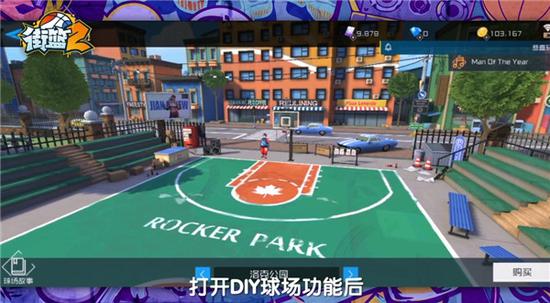
导语:《街篮2》再曝全新玩法——DIY球场!不仅是在前作基础上进行大幅的画质提升,更加入了个性创新系统,玩家可自定义球场装扮,打造你的个性球场,在详情>>

原标题:Disney+ 已在美国开放预订,包含 7 天免费试用期 距离正式上线还有 50 天时间,迪士尼的视频流媒体服务 现在已经。 在美国市场,Disney+ 提供 6详情>>

原标题:复古潮玩DIVOOM DITOO,网友:能玩游戏的小电脑才是好的蓝牙音箱 蓝牙音箱作为手机的扩展用品,想必大家都有购买和使用过,当新鲜事物的时候或许让详情>>
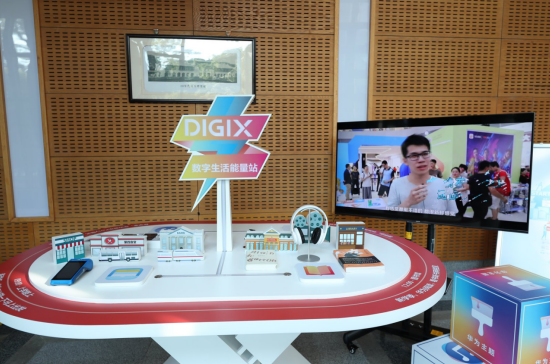
原标题:华为DigiX数字生活能量站 与厦大学子零距离“对话” 新学季,要勇于挑战,有没有给自己立下几个元气Flag?9月17-9月23日,以“数字鹭岛 开启美好新详情>>

原标题:华为DigiX数字生活节走进厦门 Flag宣言开启新学季 九月的厦门,清新浪漫。转眼已到“新学季”,在这个出发的季节,读一本好书、追一部好剧、来详情>>

近日,Dignitas俱乐部宣布他们计划重新组建一支CSGO男子战队再次活跃在赛场上。Dignitas俱乐部的CEO Michael "Prindi" Prindiville在一段youtu详情>>

原标题:大眼!Dignitas宣布计划回归CSGO男子电竞 导读:Dignitas宣布计划回归CSGO男子电竞。 在一则油管发布的视频中,Dignitas俱乐部CEO Michael "Prind详情>>
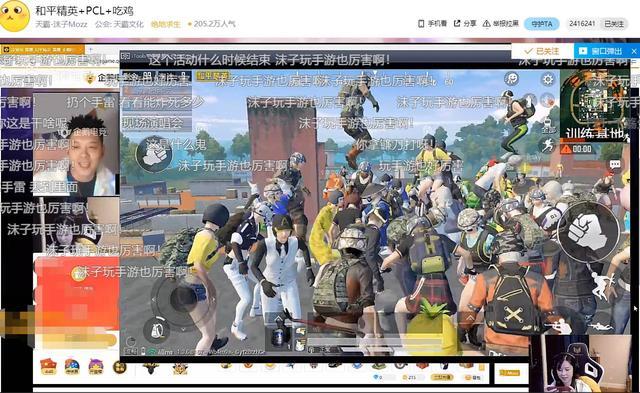
原标题:沫子老舅开黑,现场百人野狼disco?冷总调侃沫子是坏女人 文丨好六原创,盗载必究 喜欢看直播的小伙伴们大家好呀,这里是陪你挖掘主播趣事的小六六!详情>>
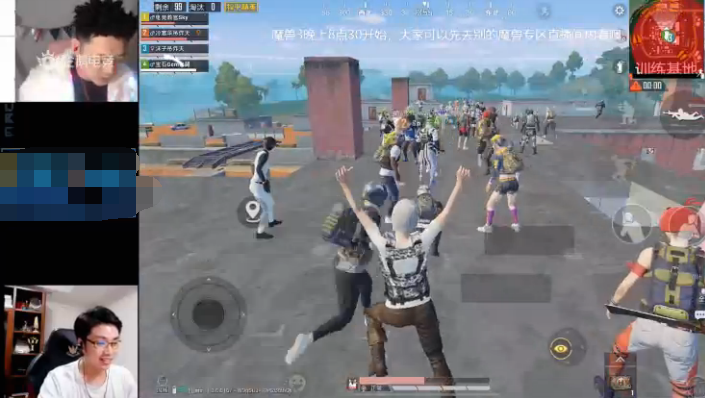
原标题:和平精英:SKY和老舅连麦吃鸡,百人同跳野狼disco太壮观了 说到近期的洗脑神曲,宝石Gem老舅的《野狼disco》无疑是排在最前面的,相信很多小伙详情>>
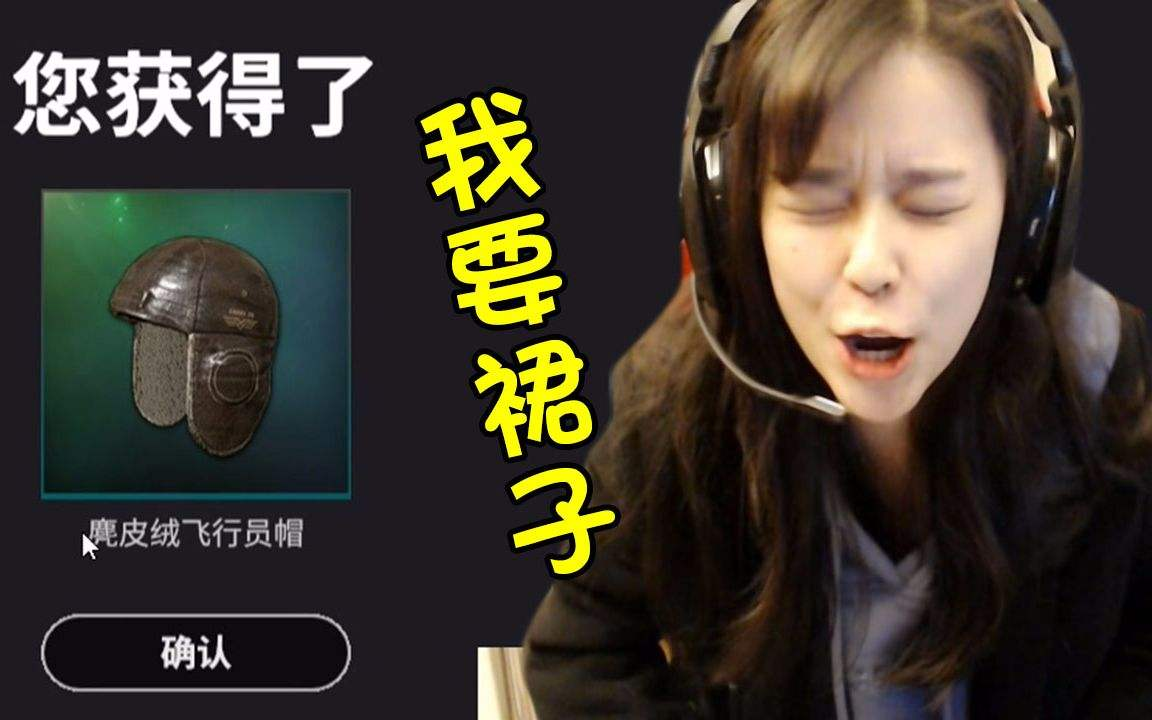
原标题:沫子成为绝地说唱一姐?在原唱面前秀野狼disco,老舅的表情亮了 《中国新说唱》虽然已经落幕,但是其中的一些说唱歌曲却被无数人传唱着,在节目中露详情>>

原标题:DIOR迪奥护肤神器,助你演绎逆天换脸术 前段时间被毛戈平老师的神仙化妆术刷屏,看到他将40岁时的刘晓庆化成15岁少女的照片,网友们纷纷感叹这哪详情>>
原标题:中国电信DICT应用生态论坛将于9月19日至22日举行 证券时报e公司讯,9月19日至22日,2019年天翼智能生态博览会将在广州举行,同期将举办主题为“详情>>

原标题:绝地求生:野狼disco宝石遭女主播狂撩 沫子:我没有长处只有大处 相信大家最近一定都被《野狼disco》疯狂洗脑中,原唱宝石gem昨晚在企鹅电竞和沫子详情>>
原标题:《野狼disco》迅速刷屏快手 背后真相竟然与这些有关? 最近快手上很火的野狼disco是宝石gem在《中国新说唱》里面唱的一首歌曲,宝石gem真实姓详情>>
原标题:《野狼disco》竟然成为新晋神曲 快手助推其全网火速传播 最近,一首名叫“野狼disco”的神曲刷爆了快手,在快手之后又全面占据了网易云等各大详情>>
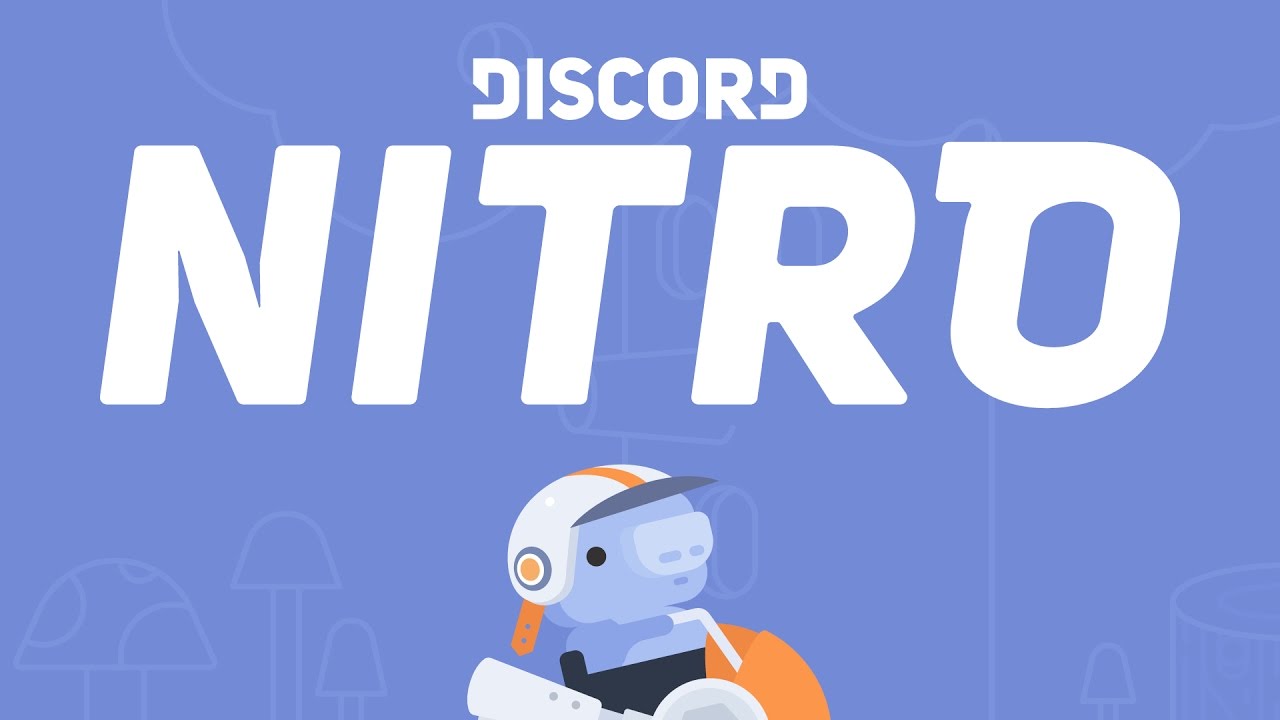
国外知名知名游戏语音社区Discord将在下个月取消其付费订阅服务“Nitro”中的免费游戏库。 于一年前推出的Nitro游戏阵容,允许订阅用户体验一些游戏,如详情>>

原标题:喜加一!Steam免费领取赛车游戏《尘埃拉力赛(DiRT Rally)》 IT之家9月15日消息 据Steam游戏商城消息,现在可以免费领取游戏《尘埃拉力赛(DiRT 详情>>

由《黑执事》作者「枢やな」担任角色原案、主线剧本,以迪士尼系列作品中反派角色为主制作之游戏《Disney Twisted Wonderland》(ディズニーツイステッドワ详情>>

原标题:Dior最新2019秋冬系列硬照,把卡拉·迪瓦伊拍得很美! Cara Delevingne的性骨不是来自于外形,而是在骨子里透出来,不管会男生或女生也会被她的个详情>>
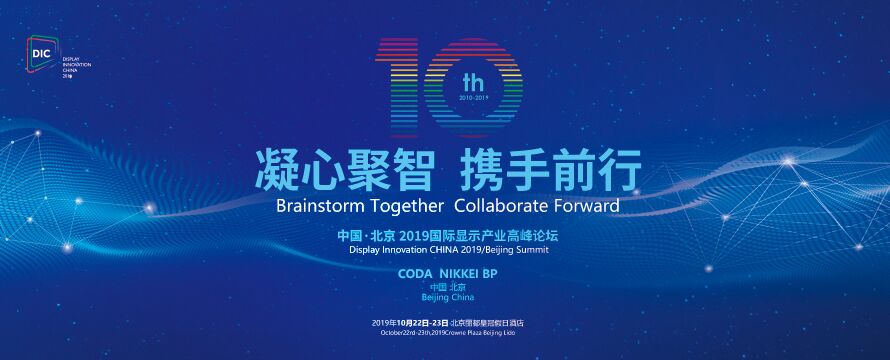
原标题:DIC 2019凝聚全球显示产业智慧 共话显示产业未来 2019年已经进入下半年,又来到各大科技厂商的发布会季,手机、电视、智能穿戴、新能源汽车等详情>>